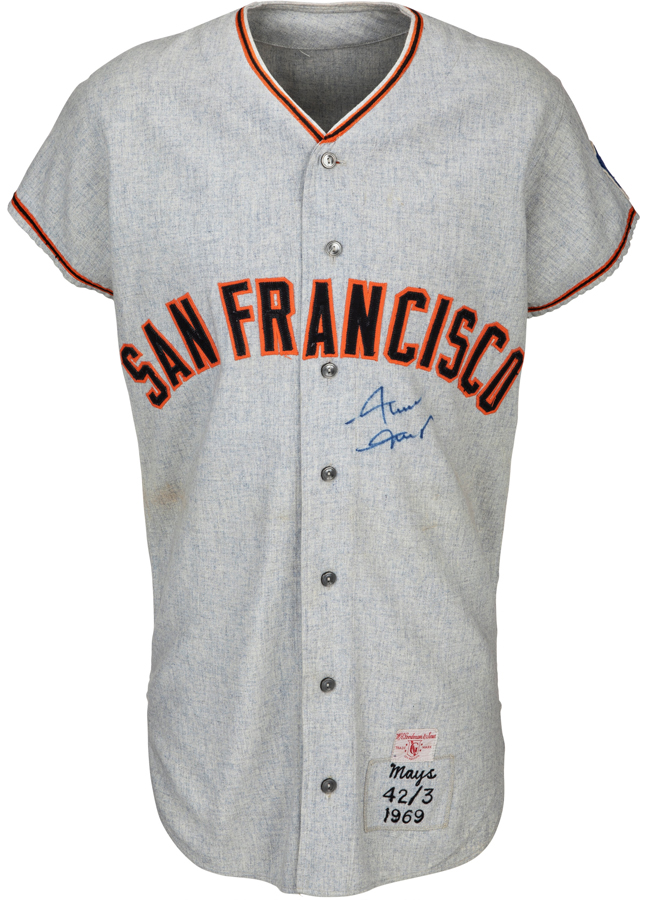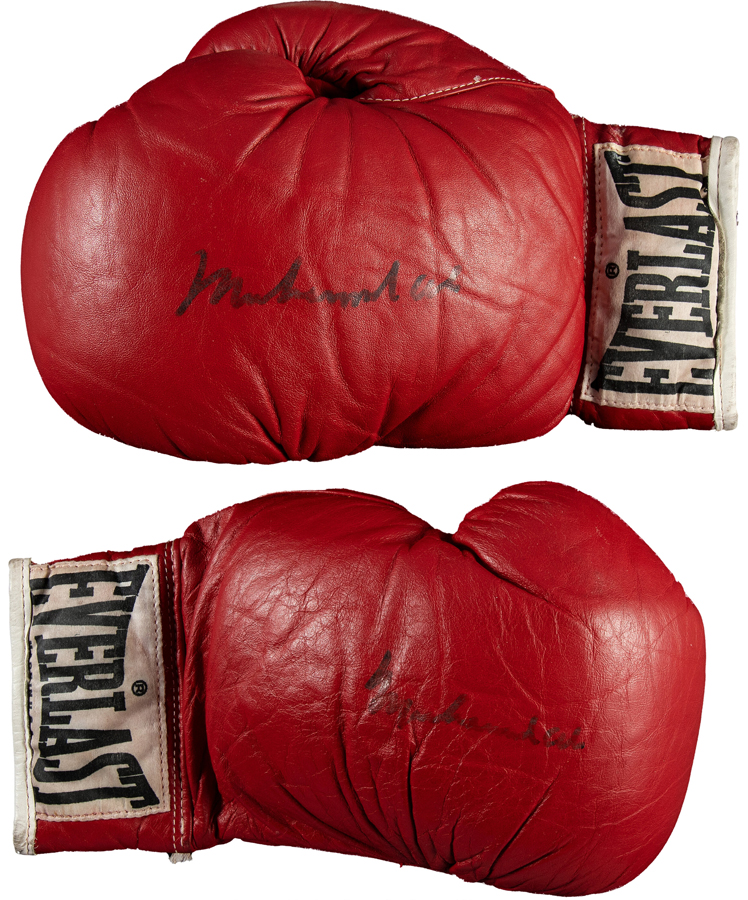THE ALLURE OF AUTOGRAPHED ITEMS LIES IN THEIR UNIQUE BLEND OF PERSONAL CONNECTION AND HISTORICAL SIGNIFICANCE, BUT DILIGENT CARE IS CRITICAL WHEN IT COMES TO PROTECTING THESE SIGNATURE PIECES
By James Appleton
Autographed collectibles have surged in popularity, encompassing various categories to include sports, music, movies and historical memorabilia. These pieces can hold immense sentimental and financial value, from signed sports memorabilia to autographed movie posters. However, maintaining the integrity and value of autographed collectibles requires diligent care and preservation. If your collection includes autographed items, the following tips may help to preserve those valuable signatures and ensure the value of your treasured pieces for years to come.
Taken in 1953 by 20th Century-Fox studio photographer Frank Powolny, this image is the only known inscribed photograph of Marilyn Monroe to Joe DiMaggio. The photo realized $300,000 in a December 2022 Heritage auction.
Common Risks Associated With Autographed Collectibles
Preserving autographed collectibles is crucial for maintaining their value into the future. Proper care helps to prevent deterioration so that these items can be enjoyed over time as well as potentially increasing their market value. The most common risks affecting autographed items include theft, loss and fading, as well as physical, environmental and chemical damage.
General Tips for Preserving Autographs
The best method of preserving a John Hancock on a treasured item depends on the material, but there are some general recommendations. Handling collectibles with clean, dry hands (sometimes wearing gloves); storing items away from high-traffic areas; and maintaining consistent temperature and humidity are tips that apply to nearly every category of collectible. But autographed items can require special maintenance depending on the medium that bears the signature.
The cast of ‘Star Trek: The Original Series’ signed this oversized poster, which sold for $8,750 in a February 2022 Heritage auction.
Media-Specific Tips for Preserving Autographs
Paper: Autographed paper products, including photos, posters, programs and ticket stubs, are some of the most common and cherished items in many collections and are particularly vulnerable to environmental and physical damage.
- Store in dark, cool places to prevent fading from light exposure.
- Consider framing with UV-protective glass to block harmful rays.
- Use archival-quality sleeves and storage boxes to provide additional protection.
- Use acid-free storage materials to prevent chemical reactions that can degrade paper.
This 1969 Willie Mays game-worn and signed San Francisco Giants jersey, graded MEARS A10, realized $276,000 in a February 2024 Heritage auction.
Cloth: Signatures on sports jerseys, T-shirts, caps and hats, canvas bags, and other types of cloth present unique challenges due to the nature of the material. If you have a game-worn jersey signed by Randy Johnson, keep these tips in mind.
- For storage, use breathable garment bags that allow air circulation and help prevent mold.
- To display cloth items, use shadow boxes or frames with UV protection to keep the autograph safe.
Muhammad Ali signed both gloves in this pair, which he wore during a 1976 bout with Ken Norton. The gloves sold for $63,000 in a July 2022 Heritage auction.
Leather: Many sports collectors have autographed balls, jackets, boxing gloves and other leather items in their inventory. Leather is durable but requires specific care to prevent deterioration. Whether you own a signed ball from the NBA Finals or a leather jacket autographed by a Hollywood top gun, these tips can be helpful.
- Keep items away from direct sunlight and heat sources to prevent fading and cracking.
- Use leather conditioners sparingly to avoid deterioration, and always test on a small area first.
- Store in climate-controlled environments to maintain the leather’s integrity.
An unusually large signature and inscription from John Lennon grace this cover of his ‘Walls and Bridges’ vinyl LP. The album realized $10,000 in a November 2019 Heritage auction.
Vinyl: From record albums to toys and figurines, vinyl items have a special place in many collections. Vinyl is a sensitive material that can warp or degrade easily. If you own an original 45 of “Blue Suede Shoes” signed by The King himself, consider the following recommendations.
- Store vinyl records vertically in a cool, dry place to prevent warping.
- Use protective sleeves and cases to shield from dust and scratches.
- Avoid stacking heavy items on top of vinyl collectibles to prevent damage.
This officially licensed claymore-style ‘Braveheart’ sword is signed by Mel Gibson. It sold for $4,000 in a January 2023 Heritage auction.
Metal: Autographs on metal items, like microphones, decorative blades, swords or even vintage automobile parts, require careful handling to prevent tarnishing and scratches. If you’ve scored a replica Klingon Bat’leth with Michael Dorn’s signature, be sure you’re following these precautions.
- Clean with non-abrasive cloths and materials to avoid scratching the metal surface.
- Store in dry areas to prevent rust and corrosion.
- Display with minimal handling to avoid fingerprints and smudges that can tarnish the metal.
Eric Clapton’s stage-played and signed 2019 Fender ‘Crash’ Stratocaster realized $112,500 in a December 2023 Heritage auction.
Wood: Got a Fender Stratocaster signed by Nile Rodgers? Guitars, baseball bats and other autographed wood objects are particularly valued by collectors. However, wood is susceptible to environmental changes, requiring careful preservation.
- Maintain a stable temperature and humidity conditions to prevent warping and cracking.
- Consider using cases or covers for storage to protect from dust and physical damage.
- Polishes, waxes and other cleaners are not necessary and may stain or damage the wood over time.
Signed, Sealed, Protected
It could be a costly mistake to assume that your homeowner’s or renter’s insurance policy provides adequate coverage for autographed collectibles that are expected to appreciate in value. Standard homeowner’s policies provide limited coverage for lost or stolen property – and that’s after the policyholder covers the deductible. In addition, these policies generally cover named perils only. In contrast, specialized collectibles policies may include all-risk coverage at limits of up to $1 million with the option of a zero-dollar deductible. Another benefit is that claims made against a stand-alone collectibles policy don’t affect premiums or coverage eligibility for your homeowner’s policy.
Before choosing a standard homeowner’s policy to protect your valuable collectibles, take some time to research specialized insurance policies that may be a better fit for your needs and ultimately provide a more appropriate level of coverage.
JAMES APPLETON is Director of Program Sales for Phoenix-based MiniCo Insurance, a Jencap company. MiniCo offers monoline specialty insurance specifically designed to cover fine art, collectibles and items expected to increase in value. Additional information is available at MiniCoCollectiblesDirect.com.








